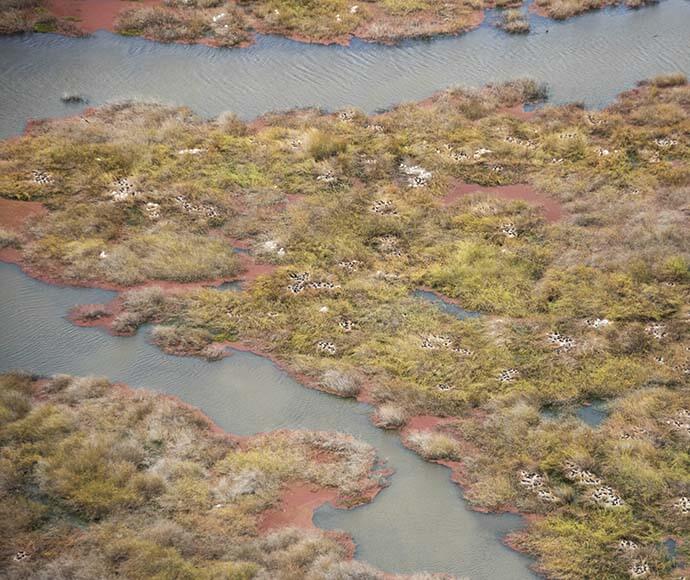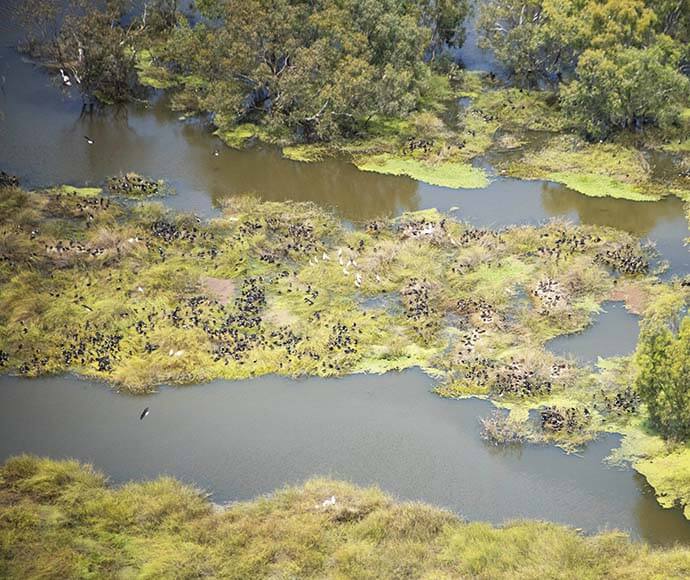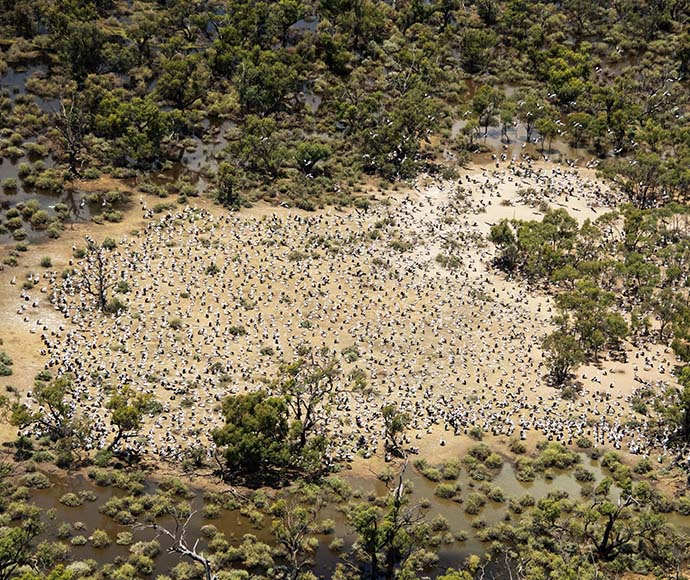On Thursday 15 December 2022, the Murrumbidgee Environmental Water Advisory Group (EWAG) held their 39th meeting online to discuss the use of water for the environment in the 2022–23 water year.
Water operations update
Due to high rainfall, inflows and releases have been historically high in the last couple of months. Murrumbidgee storages are holding the highest December accessible volume for 5 years, with Burrinjuck Dam at 98% and Blowering Dam at 99% capacity at the time of the meeting. Flood operations (including airspace management) have ceased, and normal river operations have recommenced upstream of Hay Weir.
Catchment conditions
A significant reconnection event between the Lachlan and Murrumbidgee river systems has had a major influence on the Lower Murrumbidgee floodplain. The Lachlan connected with the Murrumbidgee via the Cumbung Swamp and Pimpara Creek. The flood peaked in the Lowbidgee at Balranald at approximately 53,000 ML/day on 3 December 2022 and has receded at approximately 400 ML/day since. The gauge at Redbank was showing 11,500 ML/day at the time of meeting, which means most flows are bypassing Redbank via the floodplain.
Environmental water events update
- Environmental water (2,000 ML) to maintain habitat for southern bell frogs was delivered via irrigation infrastructure into Wargam Lakes and Wargam Creek at Coleambally in late winter/spring.
- Gayini rookeries at Telephone Bank Swamp will receive flows to maintain water levels under nests and water quality. A 300 ML/day base flow via Nimmie Creek will commence in late December and continue for several months.
- All other priority events were achieved or exceeded by ongoing floods.
Future environmental watering 2022–23 (3‑month outlook)
Environmental water delivery is forecast to start in January 2023.
- Yanco Billabong Creek base flows for native fish will be activated if required to prevent hypoxic blackwater that can cause fish kills.
- Lower Murrumbidgee River elevated base flows are planned, targeting 7,000–7,500 ML/day downstream of Maude Weir to maintain fish passage and dilute hypoxic blackwater return flows.
- Rookery maintenance flows at Gayini, North Redbank, and Yanga may be implemented to maintain water quality, prevent botulism and keep water under nesting areas as required for successful colonial waterbird breeding.
Monitoring update
Waterbirds
Annual aerial and ground waterbird surveys were conducted from October to December 2022. The table below shows preliminary population estimates from aerial, boat and drone surveys.
Gayini Wetlands
| Location | Species | Note |
|---|---|---|
| Kieta Lake | Pelicans | 10,000–15,000 birds |
| Telephone Bank (Bayil Bank) | Straw-necked ibis Royal spoonbills Egrets | 4,000–5,000 birds 300 birds 100 birds |
| Bala Rookery | Straw-necked ibis Royal spoonbills Night herons | 10,000–15,000 birds 100s of birds Flying but no nests spotted |
| Fairfax Floodway | Straw-necked ibis Royal spoonbills | 1,000 <100 |
| Near Avalon Swamp | Straw-necked ibis Australian white ibis | 200 <100 |
| Loorica Lake, House Creek | Cormorants | <100 |
Redbank Wetlands
| Location | species | Note |
|---|---|---|
| Tori Lignum Swamp | Straw-necked ibis | 1,000 nests |
| Yanga Creek | White-necked herons Cormorants | Nesting Nesting |
| Tala Lake | Cormorants | Nesting |
| Wagourah Lake | Cormorants | Nesting |
| Top Narockwell | Egrets White-necked herons | 200 nests 200 nests |
| Two Bridges and Tarwillie | Egrets | >1,000 nests |
Further surveys will be conducted during summer 2022–23 to check on the condition of the colonies. Waterbird monitoring in the Murrumbidgee valley is a collaborative effort between state and federal government agencies and the university sector, with support from Nari Nari Tribal Council and local landholders.
Fish
Approximately 1,000 southern pygmy perch were released into Lake Paika in September 2022 as part of a collaborative project between NSW government agencies and interested landholders. Lake Paika has been selected as a suitable site as it meets all the requirements for successful small-bodied floodplain fish population recovery. Recent monitoring in November 2022 found adult and juvenile southern pygmy perch, which indicates they are breeding. Department of Primary Industries (DPI) Fisheries will report the results of ongoing monitoring to the Environmental Water Advisory Group.


